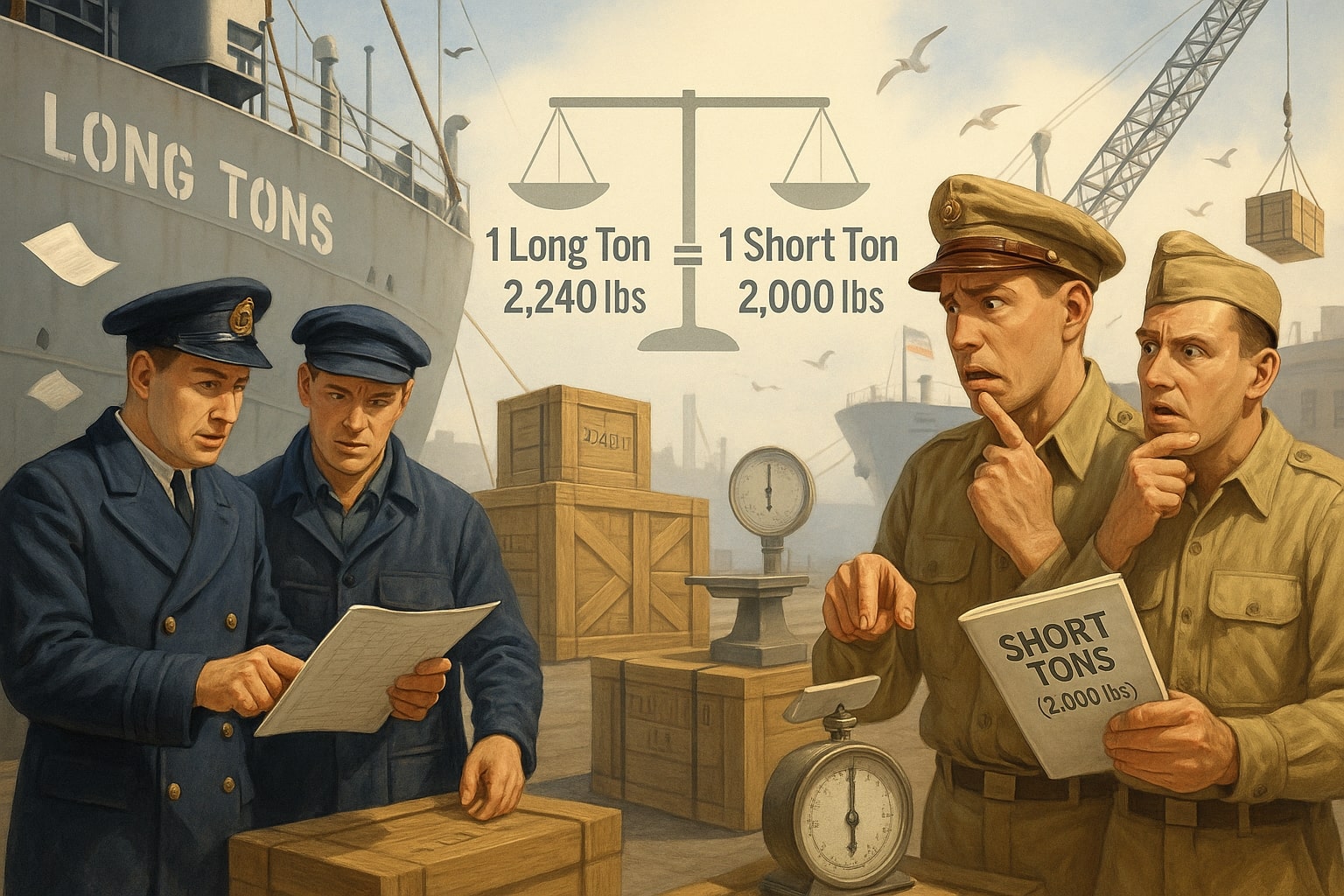kg to long ton – How to convert kilogram to long ton?
Whether you're reading old shipbuilding records or analyzing military logistics data, knowing how to convert kilograms to long tons can be essential. This unit conversion often appears in historical engineering documents, maritime freight reports, and Commonwealth construction standards.
What Are Kilograms and Long Tons?
-
A kilogram (kg) is the internationally recognized base unit of mass in the metric system, defined by the Planck constant and widely used in science, trade, and everyday measurement.
-
In contrast, a long ton—also called the Imperial ton—is a unit of mass in the British Imperial system, equal to 2,240 pounds or roughly 1,016.05 kilograms. Though largely replaced by the metric system, the long ton still appears in naval architecture, bulk shipping, Commonwealth defense records, and even in historical engineering documents, where accuracy in unit conversion remains critical for interpretation and modern application.

To convert kilograms (kg) into long tons (also called Imperial tons), divide the mass in kilograms by 1,016.04691. This constant is based on the definition that one long ton equals exactly 2,240 pounds, or 1,016.04691 kg.
Formula:
Long ton = Kilogram ÷ 1,016.04691
Example:
If a naval engineer is reviewing a cargo load weighing 12,500 kg, the equivalent in long tons would be:
12,500 ÷ 1,016.04691 ≈ 12.31 long tons
Did you know?
-
The Big Ben bell in London weighs around 13.5 long tons, making it one of the heaviest clock bells in the world.
-
During World War I and II, British battleships were designed and classified using long tons, not metric units.
-
The Royal Navy still uses long tons in ship displacement specifications, keeping with traditional Imperial standards.
-
Until the early 2000s, coal and ore exports from Commonwealth countries like Australia and South Africa were measured in long tons for international shipping.
-
UK road and bridge weight limits are still often posted in long tons, especially in older towns and infrastructure zones.
When Tonnage Caused Turbulence
In the 1940s, during the height of World War II, the British government supplied Liberty ships to support Allied logistics across the Atlantic. These vessels, built to British standards, listed their cargo capacity and hull strength in long tons—the standard unit across the UK’s maritime records.
When the U.S. military began operating these ships, confusion quickly followed. American crews were trained in short tons (2,000 pounds), not long tons (2,240 pounds). Critical weight calculations—like fuel, cargo, and ballast—risked being off by hundreds of kilograms per load. The discrepancy prompted emergency conversion training sessions and revisions to joint manuals, reminding everyone that in global operations, a ton isn’t always the same ton—and a kilogram isn’t always enough to clarify.

Conclusion
Mastering the conversion from kilograms to long tons bridges more than just numbers—it connects modern precision with historical systems still shaping global infrastructure and trade. Whether you're decoding naval blueprints or reviewing logistics reports, understanding this unit relationship ensures clarity, compliance, and continuity across industries and generations.
Need more conversion, check our Weight Converter and Conversion Tools

